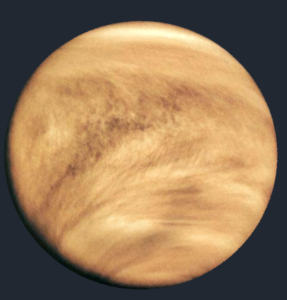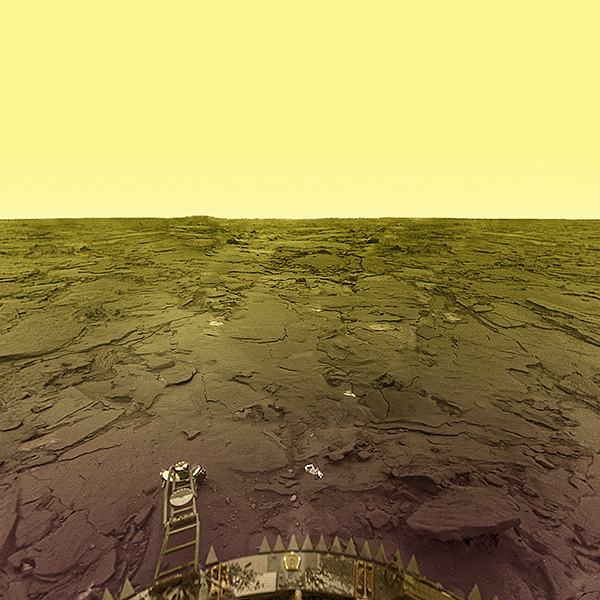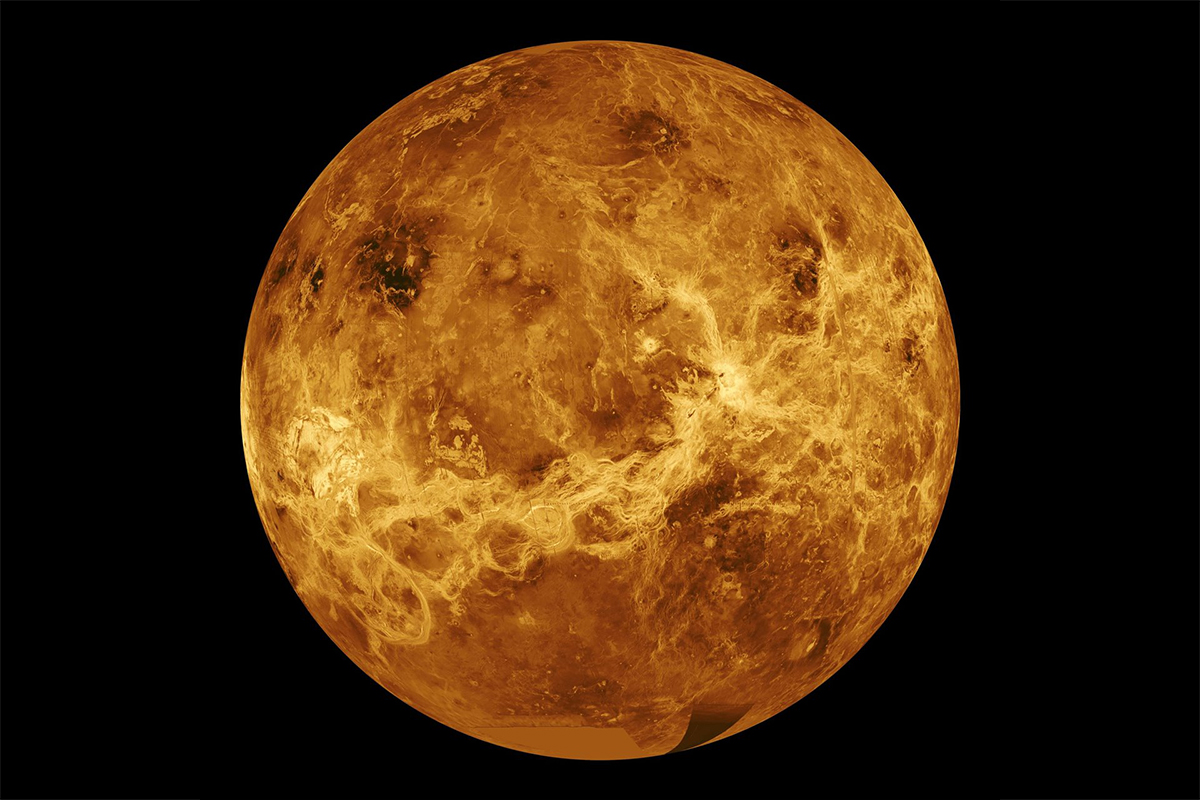
Venus is the second planet in the Solar System and the most similar to Earth due to its size, mass, density and volume. They were both formed at the same time. However, it is different from Earth. It has no oceans and its dense atmosphere causes a greenhouse effect that raises the temperature to 480 ºC. It's a scorching environment.
The first astronomers thought that Venus were two different bodies, because sometimes it is seen shortly before the sun rises and other times just after it sets. Venus rotates on its axis very slowly and in the opposite direction to the other planets (the Sun rises in the West and sets in the East). The surface of Venus is relatively young (300~500 million years old) with the presence of wide plains, crossed by enormous lava rivers, and some mountains.
Venus, the terrestrial 'twin'
Venus is often considered Earth's "twin" because of certain similarities with our planet, such as size and mass; however, a closer look reveals major differences. Venus has many volcanoes: 85% on the planet is covered in volcanic rock. The lava has created grooves, some of which are very long. There are also craters from meteorite impacts; only large ones, though, because small ones break up in the thick atmosphere.
One of the most notable aspects is the thick layer of clouds that surrounds the planet, causing a terrible greenhouse effect that absorbs heat and raises its temperature. This layer prevents the surface from being seen by direct observation, using infrared instruments. However, this aspect causes Venus to have a very high albedo, that is, a greater amount of reflected sunlight, making it the 3rd brightest star after the Sun and the Moon. The atmospheric pressure is 90 times greater than the earth's pressure and carbon dioxide predominates in its chemical composition. Another notable quality is its slow rotation speed, slowed by the Sun's gravity, which causes the day on Venus (243 d) to take longer than its year (225 d).
The probes that passed by Venus revealed the presence of mountains that have their summit in the Maxwell Mountains with 11 km. This information could only be obtained through radar, which detected these details impossible for a common observer.
The Venera probes 9, 10, 13 and 14 landed on its surface and revealed sharp-edged rocks and igneous rocks on its surface. Time was short because, given the high temperature on the planet, the Soviet probes had approximately 1 hour to do their job before completely melting.

In April 2006, ESA's Venus Express probe flew over the 2nd planet in the Solar System and carried out various studies on the Venusian atmosphere. One of their discoveries was a rare isotope of carbon dioxide that strengthens their greenhouse effect.
| CHARACTERISTICS | |
| Diameter | 12,103 km |
| Mass | 4,869 x 1024 kg |
| Density | 5.24g/cm3 |
| Gravity | 8.87 m/s2 (0.9 Earth) |
| Surface temperature | 464 ºC (day) / -45 ºC (clouds) |
| Axial inclination | 3.39° |
| Escape velocity | 10.36 km/s |
| Rotation | 243 d (retrograde) |
| Translation | 224.7d |
| Orbital speed | 35.02 km/s |
| Eccentricity | 0,00677323 |
| Albedo | 0,65 |
| Distance to the Sun (average) | 108,208,930 (0.72 AU) |
| Number of satellites | 0 |


